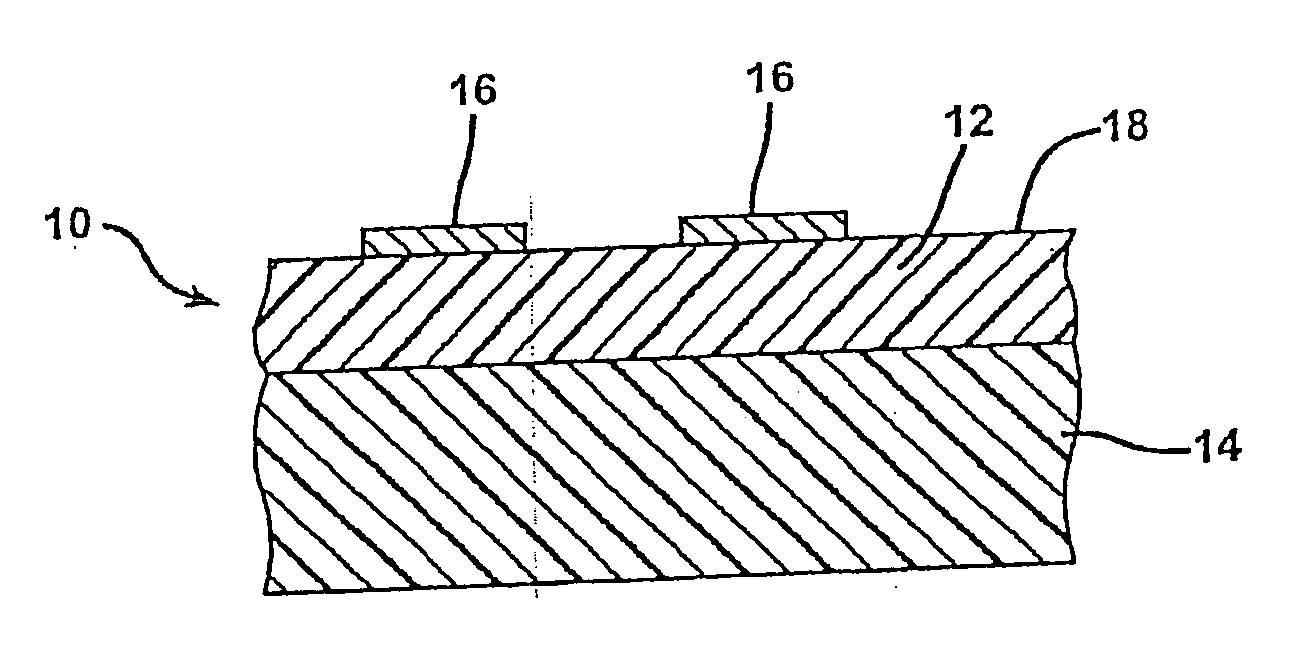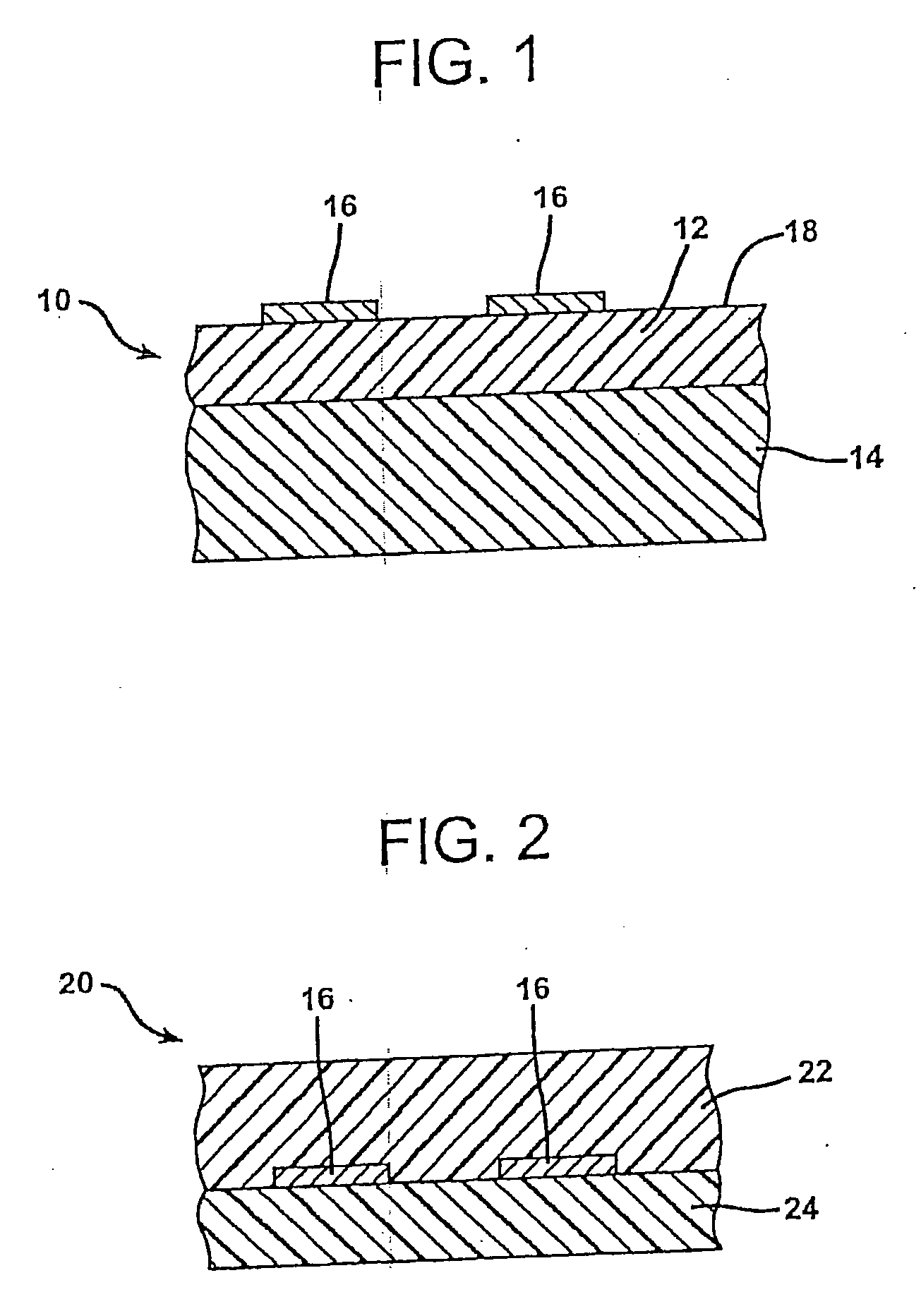Method of activating the shrink characteristic of a film
a technology of thermoplastic and film, applied in the direction of synthetic resin layered products, other domestic articles, electric/magnetic/electromagnetic heating, etc., can solve the problems of large hot-water bath or heat tunnel equipment, excessive exposure to heat, etc., and achieve the effect of increasing the tension in the film
- Summary
- Abstract
- Description
- Claims
- Application Information
AI Technical Summary
Benefits of technology
Problems solved by technology
Method used
Image
Examples
examples 1-5
[0153] Three zinc oxide particle masterbatches were formed by compounding 10 weight % of each of ZnO-1, ZnO-2, and ZnO-3 with EVA1 using a Leistritz co-rotating twin screw extruder. Each of the zinc oxide masterbatches was then blended with LLDPE1 at a ratio of 85 wt. % LLDPE1 to 15 wt. % masterbatch to give a final zinc oxide particle content of 1.5 wt. %.
[0154] A titanium dioxide materbatch was formed by compounding 5 wt. % TiO2-1 with EVA2 in the same manner as above. The titanium dioxide masterbatch was blended with LLDPE1 at a ratio of 70 wt. % LLDPE1 to 30 wt. % masterbatch to give a final titanium dioxide content of 1.5 wt. %.
[0155] A zinc oxide masterbatch was procured from PolyOne Corporation containing 25% ZnO-4 and 75% EVA3. The zinc oxide masterbatch was blended with LLDPE1 at a ratio of 94 wt. % LLDPE1 to 6 wt. % masterbatch to give a final zinc oxide content of 1.5 wt. %.
[0156] Each resulting dry blend was compounded on a Leistritz co-rotating twin screw extruder, a...
example 6
[0163] A resin blend was formed by compounding 2.9 wt. % of UVB1 and 1 wt. % of UVB2 with MDPE1 using a Leistritz co-rotating twin screw extruder to extrude a 15 mil thick film and a 2 mil thick film. A 15 mil thick film and a 2 mil thick film of 100% MDPE1 were also extruded using the same co-rotating twin screw extruder.
[0164] The transmission of UV and visible light was measured for each of the resulting films; the films that contained the organic photothermic material showed preferential absorption of UV light compared to the films that did not contain organic photothermic material. Light transmission in the visible light wavelengths remained high, indicating that high optical transparency was maintained, and minimal light scattering occurred in these films.
[0165] Square plaques were cut from the 15-mil thick film containing UVB1 and UVB2 (Example 6) and from the 15-mil thick film of 100% MDPE1 (Comparison 4). Each plaque was heated to 230° F. and held at that temperature (i.e...
examples 7-8
[0168] A seven-layer Comparison 5 film having the structure shown in Table 4 was made by first cast extruding layers 1-3, then electronically crosslinking these layers, then extrusion coating layers 4-7 onto the crosslinked substrate layers 1-3. The resulting film was biaxially oriented using a double bubble process to form 2.5 mil thick films.
TABLE 4Layer No.:1234567Functionsealant1st coretiebarriertie2nd coreabuseThickness5912.2132BF* (mils)Thickness0.480.860.10.190.10.290.19AF** (mils)Composition80% -80% -EVA3PVDC1EVA4VLDPE185% -VLDPE3VLDPE1VLDPE220% -20% -15% -LLDPE4LLDPE1LLDPE1
*BF = before orientation
**AF = after orientation
[0169] An Example 7 film was made using the same process, structure, and composition as the Comparison 5 film, except that the layer 1 had the composition of 80 wt % VLDPE / LLDPE blend and 20 wt % of a zinc oxide masterbatch procured from PolyOne Corporation (“ZnO-4 Masterbatch”), which contained 25% ZnO-4 and 75% LLDPE2. The ZnO-4 Masterbatch was dry-ble...
PUM
| Property | Measurement | Unit |
|---|---|---|
| size | aaaaa | aaaaa |
| size | aaaaa | aaaaa |
| photonic band gap | aaaaa | aaaaa |
Abstract
Description
Claims
Application Information
 Login to View More
Login to View More - R&D
- Intellectual Property
- Life Sciences
- Materials
- Tech Scout
- Unparalleled Data Quality
- Higher Quality Content
- 60% Fewer Hallucinations
Browse by: Latest US Patents, China's latest patents, Technical Efficacy Thesaurus, Application Domain, Technology Topic, Popular Technical Reports.
© 2025 PatSnap. All rights reserved.Legal|Privacy policy|Modern Slavery Act Transparency Statement|Sitemap|About US| Contact US: help@patsnap.com


